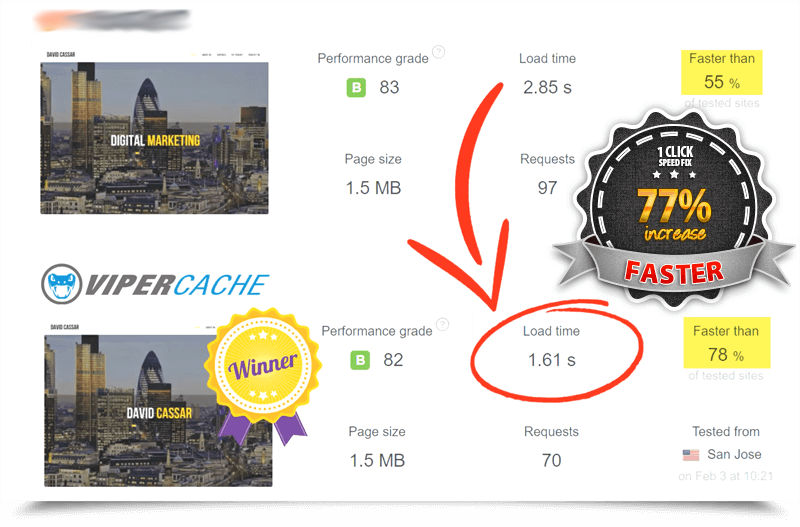Content curation is like being your audience’s personal algorithm. Just as an algorithm curates a feed for every user — putting content they’d like front and center — you separate the wheat from the chaff and collate info your followers would want in an organized way.
But where do you even find content to curate? And given the popularity of content curation, how do you stand out and offer bits and pieces that no competitor has an eye on? This article will share content curation sources that will help you become your audience’s favorite, go-to place for information.
The fault with content curation tools
If you surf online for how to become an A+ content curator, you’ll find loads of content curation tools — like Flipboard, Feedly, Curata, Scoop.it, Upcontent, etc. The problem with using these software (and even RSS feeds) as content sources is that everyone’s using them for content discovery. So you’re not truly giving your audience any new info.
Relying on content curation tools alone also makes you more of a content aggregator than a content curator: The former just collects pieces of relevant information and presents them as is, while the latter adds their own inputs and insights into the mix of existing information. It’s the difference between a retweet and a quote tweet.
To actually be successful in content curation, you need two things:
1. The ability to spot trends from a vast web of information: Seeing new information pop up every day and sharing it is one thing; connecting the dots is another. Noticing patterns and picking up on novel ideas enables you to create high-quality content — the kind no one can compete with.
2. An eye for seeing what everyone else missed: Plenty of people use content curation tools to share “highlights” of relevant content. How are you any different? Using authentic and unique sources + keeping your senses open for what everyone’s just glazing through will help you become a thought leader in your niche.
Reading these things in a silo might make it sound like content curation is magic and you need witchcraft abilities to become a great curator. But that’s 100 percent not the case. The next section will share details of ten content sources that’ll help you build a content curation strategy that’s low-effort and actionable.
10 content curation sources
1: Industry-specific email newsletters
Niche industry email newsletters are a goldmine of information. Whichever area you belong in, I’ll bet there’s a handful of popular newsletters and some unpopular ones. For example, if you live and breathe the social media world, Annie Mae’s Social Media Tea and Rachel Karten’s Link in Bio are well-loved newsletters. (And might I say, Buffer’s weekly newsletter is also A+ for social media deets? 😉)
But there are also more niche newsletters like Lia Haberman’s ICYMI for influencer marketing information and The Publish Press’s newsletter if you’re into the creator economy.
Industry-specific newsletters will provide you with a plethora of shareable content that your audience will find useful. Your followers don’t have the time to read and distill multiple newsletters — so do the task for them. Find newsletters that interview people in your niche, share relevant news, and help you stay on top of trends.
How do you find these email newsletters? Google: [your niche] inurl:newsletter. For example, if your niche is cosmetics, you’ll Google “cosmetics inurl:newsletter” and a list of cosmetics newsletters will pop up.
I’d also recommend subscribing to newsletters you come across on social media, find in other newsletters (how meta), or are recommended as “related newsletters” by newsletter software like Substack.
Keep a separate email just for these newsletters (because they can overflow your inbox). Comb through them in the beginning. You can unsubscribe to those you don’t find useful in a few weeks. Keep updating this list to always get a steady source of information within your industry — that helps you curate and create relevant content.
2: Niche news outlets
Like newsletters, there’s no shortage of niche news outlets or big news publications (like TechCrunch or Morning Brew) reporting on niche topics. For example, Business Insider has a separate creator economy webpage.
But you can also always find niche news outlets doing deep reporting in just one industry — like Modern Retail does for the retail industry. You can start to save the pieces you want to create content on in a software like Pocket and have a content repository for curating great content.
Where can you find these news outlets? Similar to newsletters, it’s a matter of finding a few to get the ball rolling. Google “[your niche] industry news” and you’ll come across multiple publications. For example, if you’re in the jewelry industry, Google “jewelry industry news” to find relevant news outlets.
You can nitpick the best sources from here. Many newsletters will often attribute their information to news publications, so keep your eyes peeled for those, too.
3: Social media trends reports
Many social media networks share trends they’re witnessing on their platform to help you create relevant content. For example, Pinterest releases a trends forecast report every year detailing what’s going to be a hit for the upcoming year. They share valuable and actionable info that can help you jot down some content ideas well in advance.
TikTok also releases a similar “What’s Next Trend Report” every year for its platform. This report doesn’t share “topics” for content creation or curation per se, rather discusses which strategies could work.
Instagram also lets you find trending Reels to help you catch up to what’s working on its network right now. Like TikTok, these trending templates are usually general trends you can spin and make your own.
Whichever platform you market on, keep an eye on their website for reports, case studies, and newsroom updates. It’ll share which strategies work on the platform and also give you an idea of what kind of content others are creating to help you curate your own.
4: Industry reports
Social media reports are wonderful, but the downside is they’re usually not niche-specific. This is where industry reports come in. Like news outlets and industry newsletters, many companies survey your potential customers and do the legwork for you. Your job is just to find these research papers.
A simple Google search of “skincare industry trends report” helped me find this amazing research by Clarkston Consulting.
You can also do this simple Google search to find niche industry reports. If you’re at the top of news outlets and newsletters, you might also come across these research papers organically. You can also do a search on Google Scholar or Statista.
And it’s not just tiny companies that create these reports. McKinsey released a “State of Fashion” report last year.
These industry reports help you understand your audience's pain points and create useful content. If you think knowing the numbers will be helpful for your followers, you can also reshare the data you find here as an infographic.
⚠️ Remember: Evaluate the methodology, sample size, and sample diversity of any research papers you come across. Ensure the demographics of the sample are diverse, overlap with your target audience, and are large enough to make a conclusive finding.
5: User-generated content
User-generated content (UGC) is the content your consumers create while using your product or service. It’s anything you’re tagged on or mentioned in by your audience. UGC is an excellent way to curate content, share subtle happy customer testimonials, and create authentic social media posts.
Thredup is an excellent example. They regularly share clothes thrifted by their customers on their feed and encourage followers to check out the same pieces on their website.
To stay on top of brand mentions, notifications aren’t enough. You can use social media monitoring tools to track where you’re tagged and where you’re mentioned (but not tagged). Many social media management tools also come with built-in capabilities of spotting brand mentions, so try to find a tool that can do multiple jobs.
6: Your For You Page (FYP)
For You Page (FYP) is a TikTok term for the personalized feed the TikTok algorithm shows you when you log into your account. But this advice is applicable to all social media channels that curate handpicked social media posts on their homepage after learning your interests and behavior patterns.
If you spend some time online from any of your business social media accounts (on any social networks), you’ll find the feed curates to one particular niche or topic. For example, if you interact with many self-improvement videos, your homepage starts to recommend similar content to watch.
This homepage is a goldmine for curating content. You can stumble across relevant info that your audience will find useful and is probably not shown on their feed. Instead of just resharing something helpful, you can add your own thoughts on it — it’s called creating a Stitch video on TikTok, Remix on Instagram Reels, and Repost (formerly Quote Tweet) on X (formerly Twitter).
An example is this Stitch video created by creator Sylvia on TikTok.
@sylvia I didnt expect this to actually work 😳 @victoria__benitez ♬ original sound – Sylvia
You can use the content you come across on your FYP to collaborate with other creators, react to trends or news, test viral hacks in your industry, or to simply continue the thought of another creator — embellished with your own examples and experience.
7: Social media hashtags or keywords
Think of social media hashtags and keywords as an extension of your FYP. You can use these tools to proactively search for trending topics in your industry and find videos you can Remix, Stitch, etc.
TikTok’s SEO (search engine optimization) is chef’s kiss and works very similarly to Google — just type in relevant keywords and popular posts including that keyword will appear like web pages.
Related Posts
Recommended Story For You :

Organize Keywords and Import CSV Files from the Google Keyword Planner

The Most Affordable And Easiest User Friendly Page Builder You Will Ever Use!

Instant WordPress Theme That Matches Your Website

Wizard to Manage Remote Backend MS Access Database Tables Fields and Indexes

If you had an aisle-by-aisle grocery list wouldn't you spend less money on impulse items?

everything you need to create a professional corporate look mini-site is there.

Unlock Your Networking Potential with GNS3Vault

Viper Cache Was 77% Faster Than The Competetion


